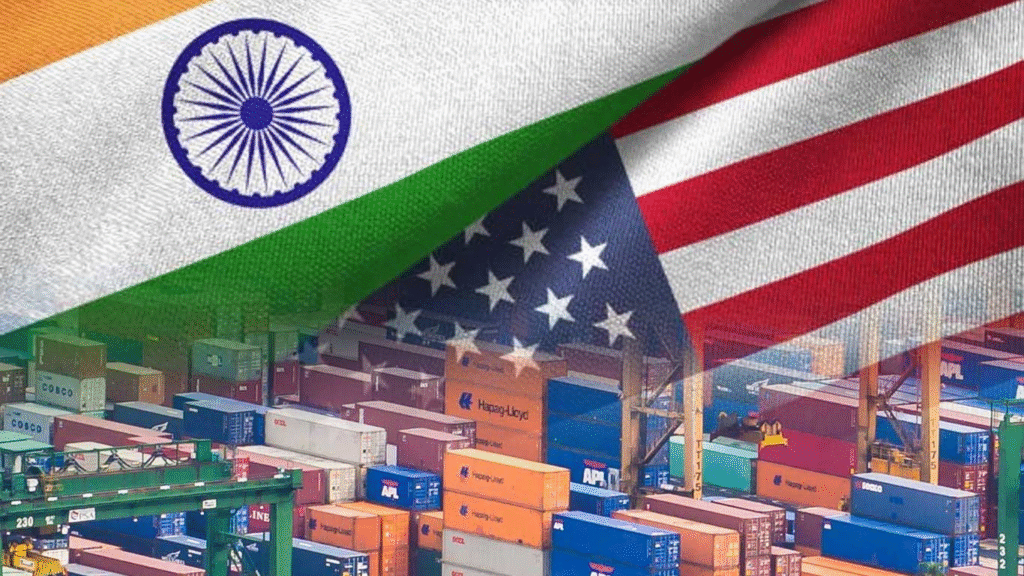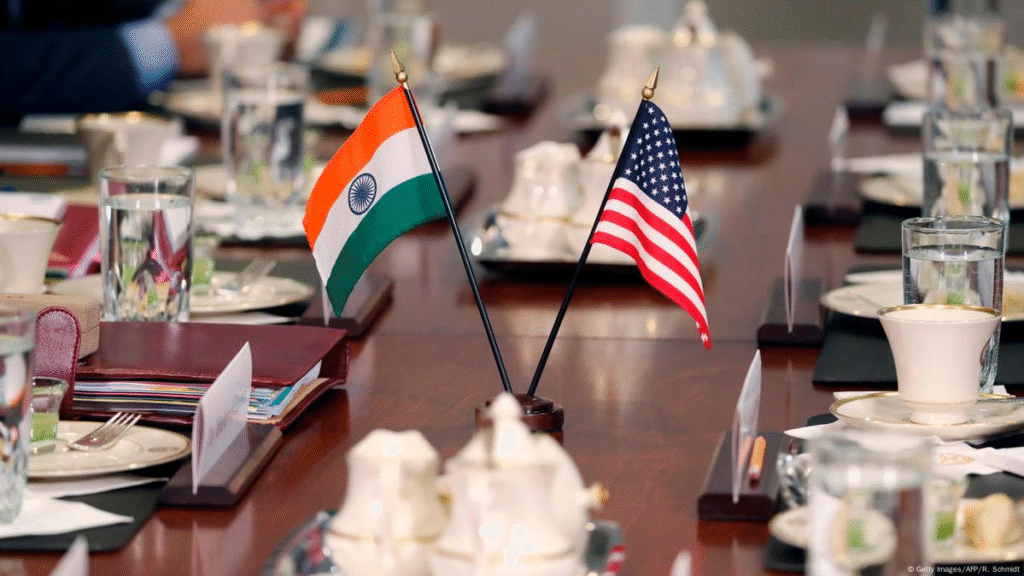
In today’s fast-evolving geopolitical and economic landscape, the dynamics of international trade have taken center stage in shaping not only bilateral relations but also national security and economic stability. Among the most critical and sensitive areas of trade for any nation are food and fuel—commodities that sustain life, power economies, and influence political strategies worldwide. India, a global heavyweight in agriculture and one of the fastest-growing energy consumers, finds itself at a crucial juncture as it negotiates the complex terrain of food and fuel trade with global powers, particularly the United States.
Under the leadership of Prime Minister Narendra Modi, the Indian government has demonstrated a strategic resolve to hold firm in trade dealings, especially when engaging with former U.S. President Donald Trump’s administration, which is known for its assertive and protectionist trade policies. This steadfast approach reflects a deeper vision where national interests, sovereignty, and long-term economic resilience take precedence over short-term political gains.
This article delves into the multifaceted dimensions of India’s food and fuel trade strategy, exploring its domestic imperatives, international diplomatic challenges, economic implications, and the broader global context influencing these decisions.
Historical Background: The Evolution of India-US Trade Relations
India’s trade relationship with the United States has evolved significantly over the past few decades. Post-independence India initially followed a protectionist economic model, focusing on self-reliance and import substitution. However, since the liberalization reforms of the 1990s, India gradually opened its economy to global markets, leading to a surge in bilateral trade with the U.S.
Food and fuel commodities have always held special significance in this bilateral trade. India is a major exporter of agricultural products like rice, spices, and tea, catering to global markets including the U.S., while simultaneously being one of the largest importers of crude oil and petroleum products to fuel its growing economy.
The Trump administration’s “America First” trade agenda marked a turning point in India-US trade relations. With increased tariffs, renegotiations of trade agreements, and demands for preferential treatment in certain sectors, India faced growing pressure to conform to U.S. trade priorities. This period necessitated a reassessment of India’s trade policies, particularly in critical sectors like food and fuel, to safeguard national interests.
The Significance of Food Trade for India
India’s role as a global agricultural powerhouse is undisputed. As the world’s second-largest producer of rice and wheat, India feeds billions domestically and supplies critical food grains to many countries, particularly in Asia and Africa. The food trade is not just a matter of economic value; it has deep social and political implications.
Millions of Indian farmers depend on export markets for their livelihoods. Moreover, food trade impacts domestic prices, food inflation, and rural income stability. Disruptions or unfavorable trade terms can exacerbate existing challenges like farmer distress and food insecurity.
The Modi government recognizes that yielding on food trade demands under external pressure could trigger domestic backlash and undermine agricultural reforms. Thus, maintaining autonomy in food trade policies is crucial to balancing farmer welfare, consumer needs, and international trade commitments.
Fuel Trade: The Backbone of India’s Economic Growth
Energy security is vital for India’s ambitious growth targets. India is the third-largest global consumer of oil, with imports constituting about 80% of its total fuel requirements. The cost and availability of fuel influence everything from transportation and industrial output to inflation and currency stability.
India’s fuel imports primarily come from the Middle East, but the U.S. has also become an important supplier of crude oil and liquefied natural gas (LNG). Trade negotiations affecting fuel supply terms, prices, or tariffs thus have direct repercussions on India’s economy.
Increased demands or constraints from the U.S. side could translate into higher energy costs for India, impacting manufacturing competitiveness and the cost of living. Modi’s government is aware of these stakes and has sought to diversify fuel sources and invest heavily in renewable energy to reduce dependency.
The Modi Government’s Policy Framework on Trade
India’s trade policy under Modi emphasizes strategic autonomy and balanced global engagement. The government pursues free trade agreements where beneficial but remains cautious of opening sensitive sectors without adequate safeguards.
Food and fuel trade policies are integrated into this framework. The government ensures buffer stocks for food grains, supports Minimum Support Prices (MSP) for farmers, and regulates exports carefully to prevent domestic shortages. Similarly, in the fuel sector, India pursues strategic petroleum reserves, promotes indigenous energy production, and negotiates supply deals that ensure price stability.
The Modi government’s stance in dealing with Trump’s administration—insisting on fair trade terms without compromising India’s core interests—is consistent with this policy outlook. This approach underscores a commitment to protecting vulnerable sectors while engaging constructively with global partners.
Challenges of External Pressure and Protectionism
The Trump administration’s trade policies, characterized by tariffs, sanctions, and unilateral demands, created a challenging environment for India. Food and fuel trade became bargaining chips in broader geopolitical negotiations.
India faced pressure to curb agricultural exports to meet U.S. demands for market access or concessions in other sectors. Similarly, fuel trade discussions included demands for favorable pricing or import commitments that India found difficult to accept.
These pressures were amplified by the broader context of trade wars and protectionism worldwide. India’s challenge was to avoid becoming a victim of these dynamics while advancing its national economic agenda.
India’s Domestic Reforms to Strengthen Trade Resilience

Recognizing the vulnerabilities exposed by international trade pressures, India accelerated domestic reforms. Agricultural reforms aimed at increasing productivity, improving supply chains, and enhancing market linkages have been prioritized. Initiatives such as digitization of farmer data, better access to credit, and infrastructure development are transforming the sector.
In energy, India has aggressively promoted renewable sources, aiming to increase solar and wind capacity dramatically. The government also incentivizes energy efficiency and supports domestic oil exploration to reduce import dependency.
These reforms not only strengthen India’s negotiating position in international trade but also build resilience against global market volatility.
The Role of Multilateral Institutions and Trade Alliances
India’s approach to food and fuel trade is also shaped by its engagement with multilateral institutions like the WTO. India has been a vocal advocate for the rights of developing countries in trade negotiations, insisting on fair treatment and flexibility in food subsidies and export controls.
Beyond the WTO, India seeks to strengthen regional trade agreements and alliances. The Regional Comprehensive Economic Partnership (RCEP) negotiations, despite challenges, reflect India’s interest in deepening trade ties in Asia. Similarly, bilateral agreements with countries in Africa and the Middle East are part of India’s strategy to diversify markets for its agricultural exports and secure energy supplies.
This multilateral engagement complements India’s firm bilateral stance with the U.S., allowing it to balance various interests.
Diplomatic Nuances: India’s Balancing Act
The Modi government’s diplomacy reflects a sophisticated balancing act. While standing firm on trade principles, India continues to pursue a strong partnership with the U.S. in defense, technology, and strategic affairs. This balance is crucial given the geopolitical rivalry between the U.S. and China, where India’s cooperation with America has strategic value.
At the same time, India nurtures ties with other global powers like Russia, the European Union, and the Gulf states, ensuring a diversified foreign policy that supports its trade and security interests.
This multidimensional diplomacy allows India to manage trade pressures without jeopardizing its broader international relationships.
Economic Implications: The Ripple Effect of Food and Fuel Trade Decisions
Trade policies on food and fuel have far-reaching economic consequences. Export restrictions or tariffs on agricultural products can lead to market distortions, affecting prices, consumption, and farmer incomes. Fuel trade disruptions influence inflation rates, industrial production costs, and foreign exchange reserves.
India’s ability to hold the line on trade negotiations helps maintain economic stability. By securing favorable trade terms, India safeguards its growth trajectory, protects vulnerable populations, and enhances investor confidence.
Moreover, stable food and fuel markets enable the government to focus on other economic priorities like infrastructure, education, and healthcare.
Case Studies: Lessons from Past Trade Disputes
India’s recent trade history offers lessons on managing food and fuel trade pressures. For example, during the global food price crisis of 2007-08, India imposed export restrictions on rice and wheat to control domestic inflation, which drew criticism from trading partners but protected domestic consumers.
Similarly, India’s handling of fuel price volatility during global oil shocks highlights the importance of strategic reserves and diversified energy sourcing.
These experiences underscore the need for flexibility, strategic planning, and clear communication in trade policy.
The Importance of Public Perception and Political Will
Public support and political determination are vital for India’s trade policy success. Farmers’ protests and consumer concerns can influence government decisions on food trade. Similarly, energy price hikes can spark widespread public dissatisfaction.
Prime Minister Modi’s government has shown political will in pursuing reforms and resisting undue pressure, balancing competing interests through dialogue and targeted interventions.
Transparent communication and stakeholder engagement remain essential to sustaining this support over the long term.
Future Prospects: Technology and Innovation in Trade
Emerging technologies offer new opportunities to enhance India’s food and fuel trade capabilities. Precision agriculture, blockchain for supply chain transparency, and AI-driven market analysis can increase efficiency and reduce vulnerabilities.
In energy, advancements in battery storage, green hydrogen, and electric vehicles could reshape India’s fuel import landscape.
Investing in these technologies will empower India to negotiate from a position of strength, supporting sustainable and resilient trade.
Conclusion: India’s Path Forward in Global Trade
India’s stance on food and fuel trade amid pressures from the U.S. and other global players is emblematic of its broader economic and diplomatic philosophy. By holding firm, Modi’s government reaffirms India’s commitment to sovereignty, economic security, and global responsibility.
This approach ensures that trade policies serve the nation’s long-term welfare, balancing domestic needs with international engagement. As global trade becomes more complex and contested, India’s strategy of resilience, reform, and diplomacy will be critical to its continued growth and influence on the world stage.
India’s journey in navigating food and fuel trade pressures is a testament to its maturity as a global economic power—assertive yet pragmatic, protective yet open, and always focused on the welfare of its people.

